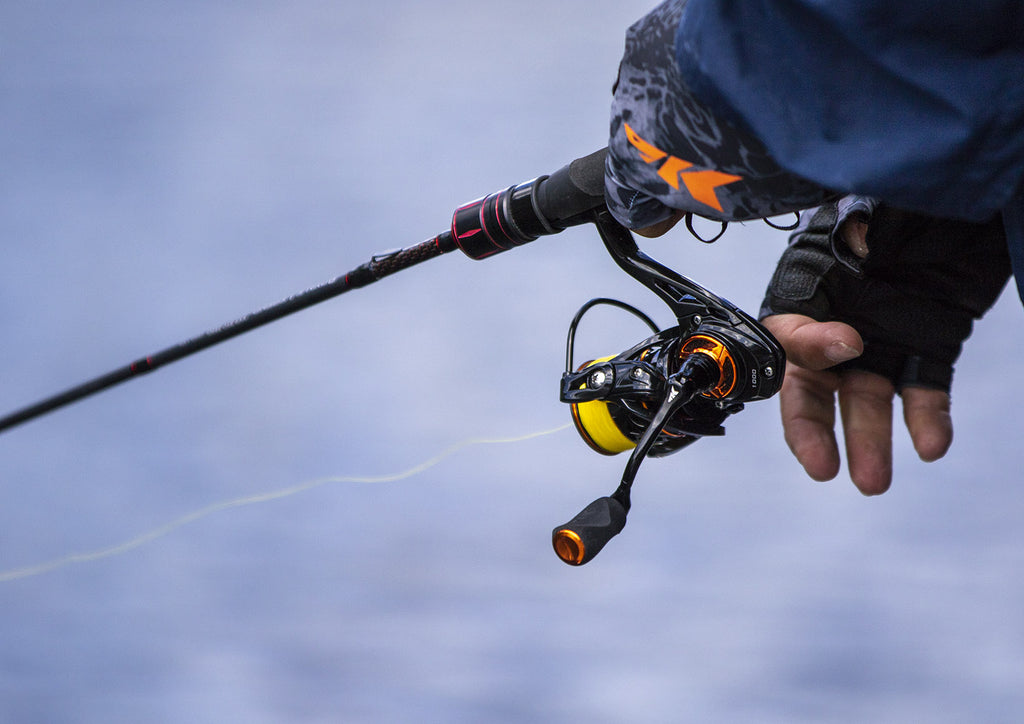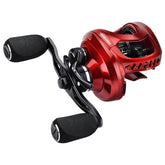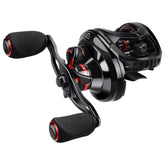
Four Fundamentals For Successful Bass Fishing
In bass fishing anglers need to have a game plan before hitting the water. For me, there are four fundamentals you need to pay attention to – Proper Presentation, Bait/Lure size and design, Gear, and Location and Technique. If you work to achieve these fundamentals to the fullest you can, I can almost guarantee every outing will be a good one. Although you “can” have success without a fundamental approach, adding these to your arsenal will only make you a more successful angler.
It Is Not A Guarantee!
Bear in mind, having a fundamental game plan does not guarantee you will catch fish, but it will increase your odds dramatically, especially on those days when the “fish” are off. I have fished, attended, rode as a co-angler and been to a lot of professional bass tournaments. And, I have seen some of the best anglers in the world come up empty. There is always one thing in common though – they all had a fundamental game plan in place. More times than not, this game plan had them bailing fish and winning big tournaments when others just casted their lines and hoped for the best.
Proper Presentation
To me, the first fundamental is proper presentation. There will always be times when fish will bite their heads off on anything you throw, but there will be a lot more times when the opposite is the case. Proper presentation includes the following:
- Speed
- Cadence
- Placement
- Speed is critical on basically every bait/lure you use. Every bait/lure you use is trying to replicate some form of baitfish, bird, snake or insect a bass wants to eat – and every meals reacts differently near the water. Fleeing baitfish are moving rapid90ly, whereas a frog might be slowly navigate ng a lily pad feed. A dragon fly’s body perfectly resembles a stick bait, which you could hop along a milfoil field.
Long casts can make a huge difference when using deep crankbaits, lipless crankbaits and catching bass off guard by hitting the tip of a point with a Zara Spook

- Cadence is the act of how the lure works. And this is very critical to matching the bait you intend the bass to feed on. This fundamental in bass fishing to me is critical. If I am using a soft bodied plastic frog, I want that bait to look exactly like a frog in the water, and that includes the pauses a frog takes, and then it actually swimming. A jig worked along the bottom needs to represent a crawfish fleeing, or in fighting mode.
- Placement is the simplest fundamental part of the four fundamentals of bass fishing. It simply means placing your bait in the area closes to where you feel the bass is lying or working areas where bass can ambush a fish. For lily pad fields this means working your frog across the pads, then pausing in between openings. When fishing docks, try and get your bait as far under as possible. Working rocky bottoms means placing your bait near transition areas of different rocks and humps.
Artificial Bait Size and Design
Choosing the correct bait is another key component to the four fundamentals of successful bass fishing. By choosing the right bait, you increase your chances with every cast you make.
- Match the Forage
- Large vs Small
- Type
- Matching the forage is probably the number one component when picking what bait you are going to throw. For example, if the fish are crashing through the pads or blowing up on top of the water, chances are they are feeding on insects or baitfish near the surface. You need to identify the “food source” then match it. The same holds true when fishing deeper waters. Looking at your screen and identifying baitfish will aid in matching the forage. ‘
- For size, this is the second feature that goes right along with matching the forage. If the fish are feeding on insects, smaller profile baits like slender worms/stickbaits or small poppers is a good choice. If they are chasing shad or white perch, then larger crankbaits or Zara Spooks will get the nod.
A well placed crankbait next to a stump produced this quality largemouth

- The last lure item is type. This plays into the size choice but goes a bit deeper. If the fish are feeding on a 6-inch bait, then using a smaller topwater in the 3-inch class may not get noticed, but using a larger 4 to 7 inch bait will get crushed on more than one occasion. The same holds true for a lure like a jig. If you are trying to mimic a smaller crawfish ion the early part of the season, then a large 1/2 ounce model may not be your best choice.
Location
Where you plan on fishing is just as important where fundamentals of successful bass fishing is concerned. If you have a handle on what size and type of body of water you plan to fish, matching the forage and presentation is very easily obtained.
- Local Pond
- Lake/Reservoir
- River System
A good set of charts for the waters you plan to fish goes a long way in knowing where it is safe to navigate, plus fish holding hot spots

- Fishing a local pond can be challenging but also very forgiving. Local ponds for the most part will be shallower and a lot smaller than a lot of the larger lakes and reservoirs. And, some, if not most local ponds, access can be limited to walking, rather than boating. For local ponds you will need to scale down the amount of tackle you carry, and possible the variety. Having a handle on how big the fish may be and what is in the pond is the key.
- Larger lakes and reservoirs can be quite challenging, but having a good map or local knowledge will be the key to this fundamental. Knowing how to navigate and knowing where deeper holes, grass lines and structure will all play a role in your success. Is the lake a rocky bottom? Sand? Heavily inundated with grass? What type of grass? A good set of electronics, local knowledge or charts (paper) are the key ingredients.
- River systems can be the most challenging as water depths can vary greatly due to weather and at times tidal conditions. You can also encounter areas where running a bass boat can be quite tricky due to shallow water and rocks! Lower units do not fare well on big rocks…just saying. River systems will almost always have current which will mean you have to control the boat constantly, plus make sure the presentation is as natural as possible and not just swinging along in the current.
The Gear!
The last of the four fundamentals for bass fishing is your gear. Without the proper gear, you might as well just stay home or take up golf…it is that serious! The right rod, reel, line and terminal tackle all must be geared towards your plan.
- Finesse
- Distance
- Accuracy
- In the finesse department, having a reel like the KastKing Zephyr BFS or SFS reel matched to the right rod will make tossing smaller baits accurately and farther an easy task. Small diameter braid line and light leaders will all enhance this method.
Nothing beats the KastKing Finesse series of reels for small baits

- I like distance partly because I feel a long cast will enable you to sneak up on a bass, especially on points, shallower water or areas where they may be staging. Distance also plays a role in getting deep diving baits to the depth you want easier. KastKing makes a wide array of longer rod lengths in the Speed Demon, Cliff Crochet Spirale and Perigee II that will have you making long casts to wary bass, and have the power to set the hook.
- Accuracy is critical to anglers targeting bedding bass in the spring, docks, and points or rips. If you cannot make an accurate cast, your lure may be off target enough to either spook a wary fish or be totally out of the strike zone for that fish. Shorter rods are best suited for accuracy, but for me, I still prefer rods from 6-8 to 7-3.
Four Fundamentals of Successful Bass Fishing
If you utilize these fundamentals when bass fishing your chances of catching both quality and quantity increases greatly. Study the body of water you plan to fish, makes sure the rod and reel are for geared towards the style, size and method. Work on your presentation and make sure you match the forage. If you do all of these, there is no bass out there safe from you!












